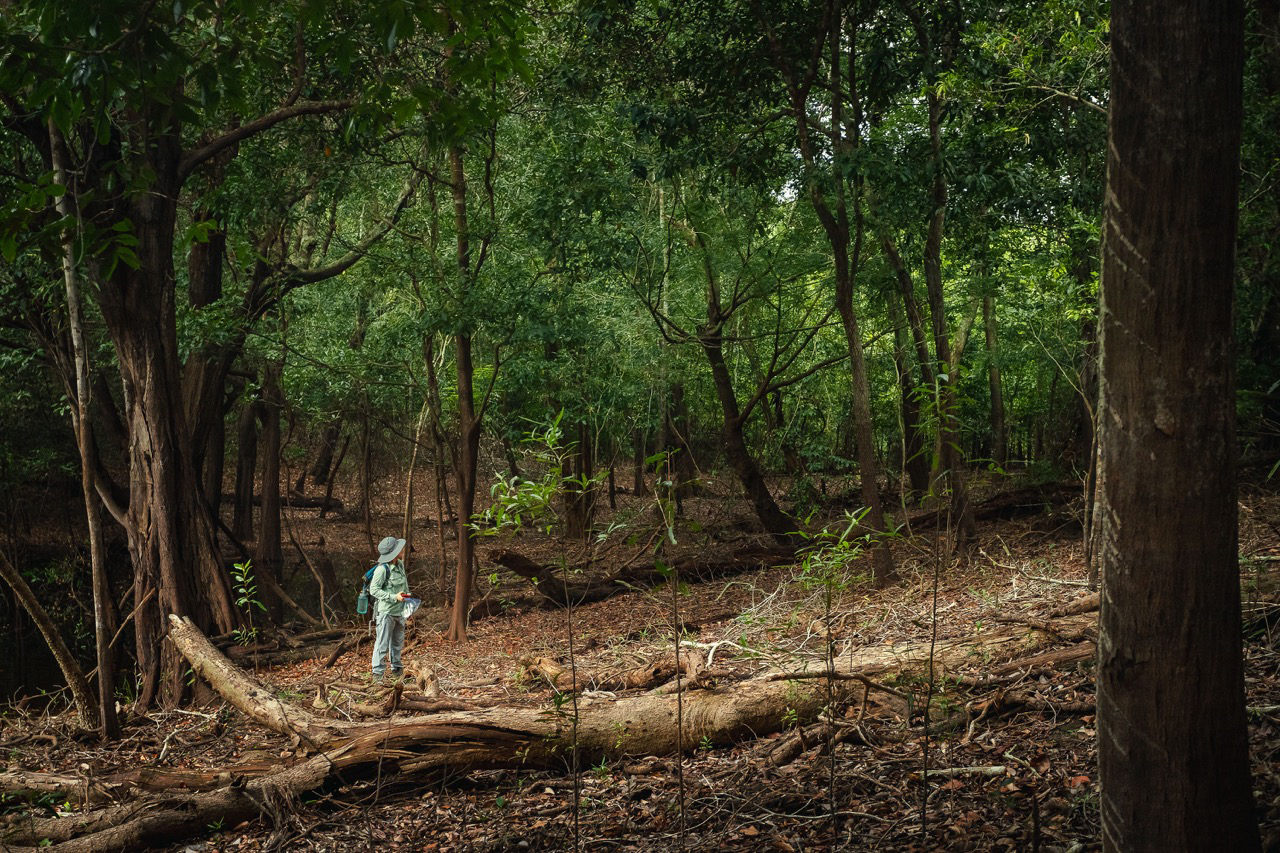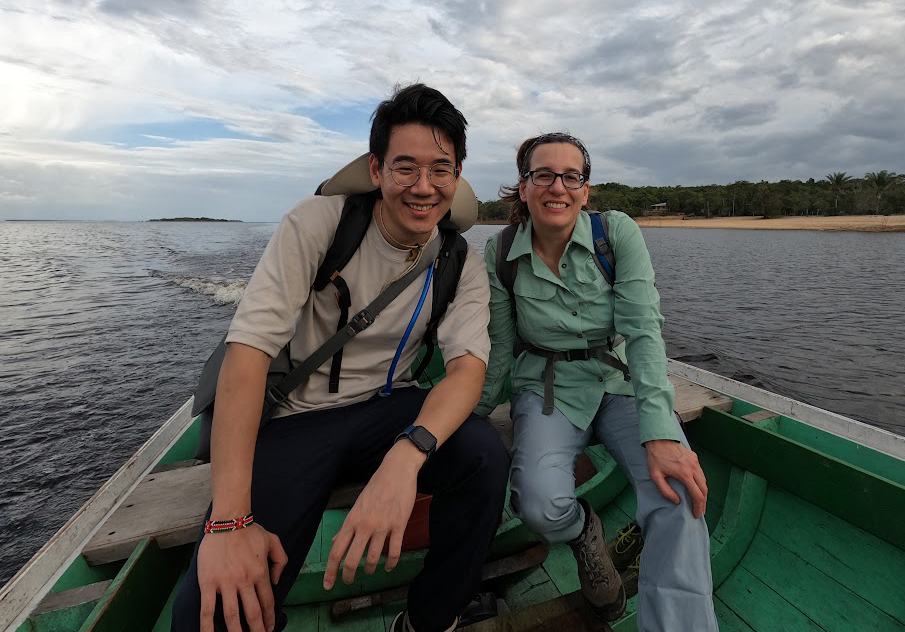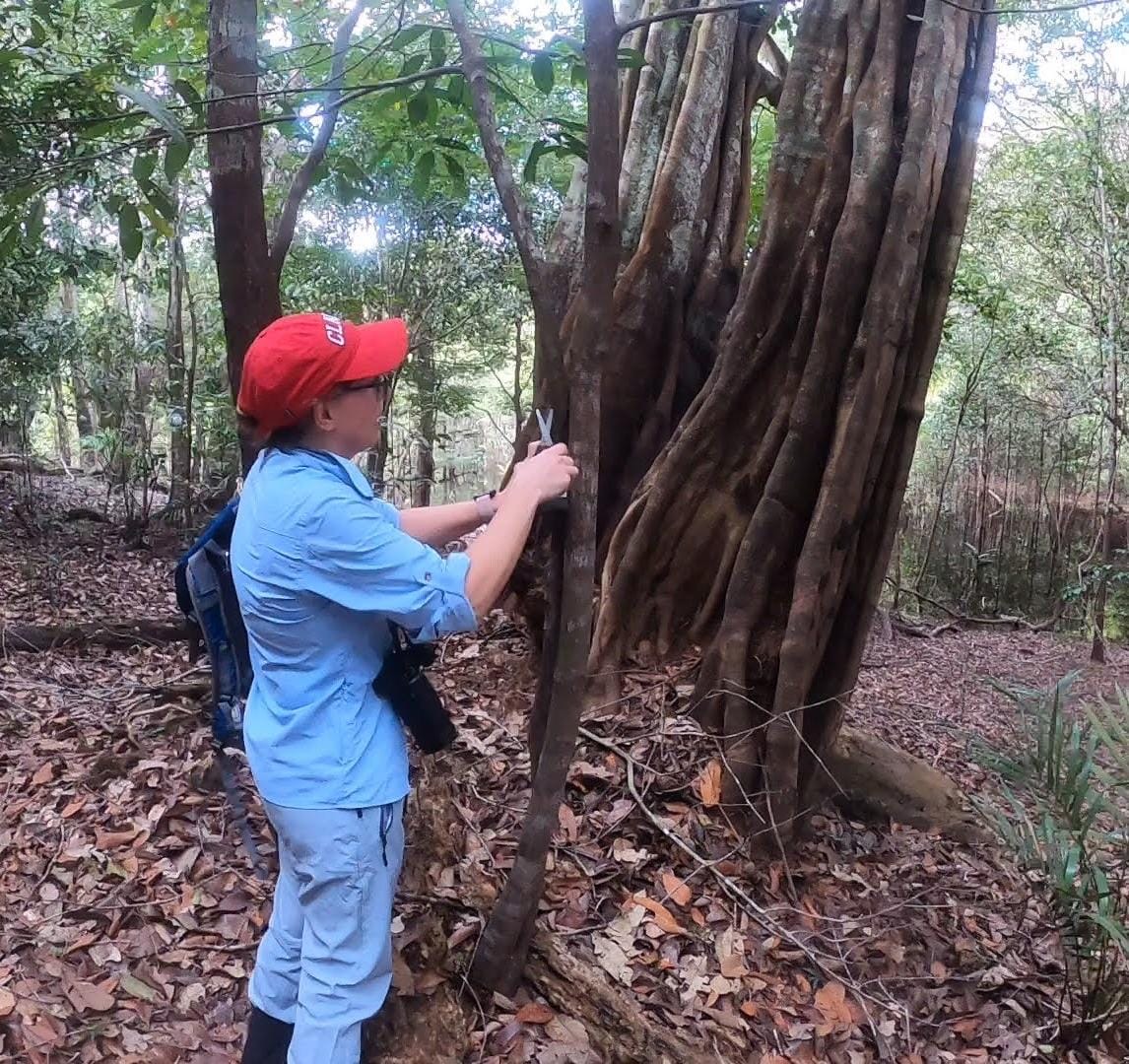Clark geographer applies ecoacoustic research to assessment of the Amazon

Florencia Sangermano, associate professor of geography, is part of a global research team hoping to win a five-year, $10 million XPRIZE Rainforest competition by remotely collecting biodiversity data from deep within the Amazon, identifying the most species, and providing the most impactful real-time environmental insights — all within three days beginning Thursday, July 11.
“The point of the competition is to monitor biodiversity by identifying species in 100 hectares of forest in Brazil. The catch is that you cannot enter the forest,” says Sangermano, pictured above, a member of the ETH BiodivX team sponsored by ETH Zurich (Eidgenössische Technische Hochschule Zürich) in Switzerland. The team includes 58 experts in cultural, artistic, scientific, and social science fields from across the world.

Starting July 11, Sangermano and her teammates will have 24 hours to collect environmental DNA (eDNA), images, and sounds via autonomous drones and rovers in an unpublicized area in Amazonas, Brazil, which, at more than 600,000 square miles, is the ninth-largest country subdivision in the world. In the next 48 hours, through July 13, they will analyze the data using techniques that combine a live dashboard, advanced AI algorithms, and insight from indigenous citizen scientists.
“The 24-hour data collection will take place in a remote area in the Amazon with no facilities or internet connection,” Sangermano explains. “After the data are collected, we will bring them back to the base camp for processing— and hope that we have enough power to run all the equipment, which includes a backpack eDNA lab and many computers.”
XPRIZE competitions encourage the development of crowd-sourced, entrepreneurial solutions to global challenges across seven “domains,” from Biodiversity and Conservation to Space and Exploration. The first XPRIZE, presented for private spaceflight in 1994, inspired the launches of commercial entities like Virgin Galactic, Blue Origin, and SpaceX. Since then, the XPRIZE Foundation has distributed $519 million in prizes, and winners have filed 895 patents.
In this Rainforest competition’s final year, ETH BiodivX is vying with five other finalist teams from the United States, Brazil, and Spain. The teams advanced from the semifinals in Singapore in spring 2023. The original field included 300 registered teams.
ETH BiodivX will rely on the Zurich institution’s robotics team and drones, which will fly into and above the rainforest to collect a variety of biodiversity data, including Sangermano’s ecoacoustics research, for which she was named a Kavli Frontiers of Science Fellow in 2022 by the National Academy of Sciences.

Deploying audio recorders strapped to trees, Sangermano has monitored the health of ecosystems in Central Massachusetts by tracking the sounds of birds, humans, and weather.
She graphs the frequency, amplitude, and length of time of the sounds, transforming them into images. Using satellite images that show the relationships among indices indicating the health of habitats, along with human activity, she paints a picture of which ecosystems might be threatened — and how.
“We can connect what we can see in the sounds with what is happening in the landscape,” she says of her Massachusetts research. “I am seeing how urban and suburban expansion affects the sounds of our ecosystems” and “use the sounds to monitor that habitat quality.”
Sangermano’s graph of the Massachusetts soundscape indicated human sounds at low frequencies, interspersed with birds at higher frequencies, and pockets of silence.
In the Amazon rainforest, however, the story is much different.
“The Amazon is a very loud soundscape — all the time, at all frequencies,” she says, with the loudest, most prevalent noises coming from the buzzing of insects. “It’s full — there is no moment of silence in that acoustic space.”
Another difference between the two soundscape projects, she says, is that “when I was working with acoustics here in Massachusetts, I would go into the field and place the recorders in a tree. But in the competition, they will have to be deployed remotely. So that is what makes this a very interesting acoustic monitoring challenge.”
Sangermano’s acoustics research and geographical information science (GIS) expertise will help inform the environmental insights that the ETH BiodivX team derives from data gathered in the Amazon, she says. “This is a big team effort with collaborators from all around the globe who contribute to multiple moving pieces, of the big puzzle that is assessing the state of Amazon biodiversity.”
The winners of the Rainforest competition are expected to be announced by the end of 2024.


